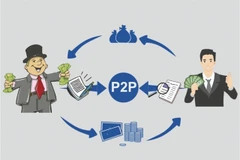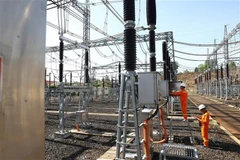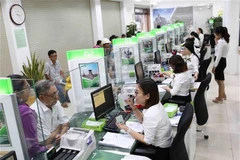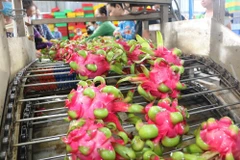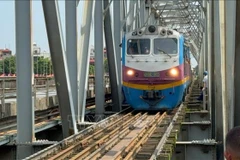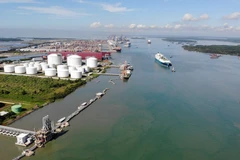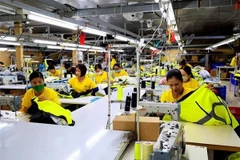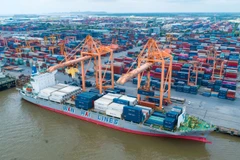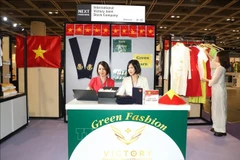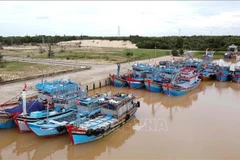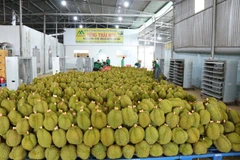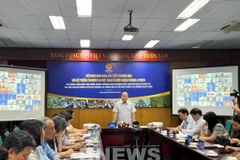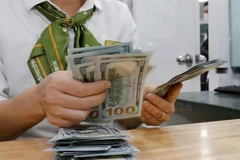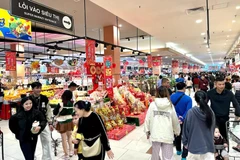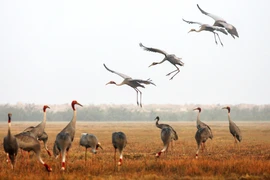Vietnam'stextile and garment industry will continue to face difficulties in the comingmonths due to the decreasing orders from markets like the US and the EU,according to the Vietnam Textile and Apparel Association (VITAS).
Statisticsfrom VITAS showed that in the first half of the year, the industry’s exportturnover was estimated at 18.6 billion USD, down 17.6% over the same periodlast year. Meanwhile, the import turnover also reduced by 20.5% to 10.7 billionUSD in the first six months of the year.
VITASforecast that production and export of textiles and garmentswill gradually improve, but difficulties will continue until the end of2023 as many businesses have not yet had enough orders for the third and fourthquarters.
As such, thegarment and textile sector set an export turnover target of 40 billion USD thisyear.
According toinformation from the Mercantile Exchange of Vietnam (MXV), since the endof 2022 cotton prices have been quite stable, mainly struggling within a smallrange of 1,800 - 1,900 USD per tonne. The cotton prices traded on theIntercontinental Exchange (ICE) as of July 18 at 1,847 USD per tonne, downnearly 1.5 times from the price of nearly 2,700 USD per tonne recorded lastAugust.
Cottonprices are stable at low levels stemming from both supply and demand of themarket. On the supply side, cotton production gradually recovered after theeffects of drought in the main cotton-growing region of the US in mid-2022.Meanwhile, the recovery in demand for cotton was lower than expected dueto global economic headwinds.
Inparticular, China, the world's largest cotton importer, is still showing a slowrecovery after removing its zero-COVID policy, making cotton imports lesspositive.
Pham QuangAnh, Director of the Vietnam Commodity News Centre, said that the world economystill faces many challenges, especially the slow recovery of China which hascontinued to be a major obstacle to increase demand for cotton products.Therefore, cotton prices could maintain a pullback trend in the near future.
Stablecotton prices are a good thing for big cotton importing countries like Vietnam.But the problem is that the price dropped sharply and showed no signs ofrecovery, making local textile and garment enterprises that hadpurchased goods before not able to react.
The pricedifference makes the cost of producing textiles and garments in the countryhigh compared to elsewhere which is not heavily dependent on inputmaterials, hindering Vietnamese firms in receiving orders.
Cao Huu Hieu,General Director of the Vietnam National Textile and Garment Group (Vinatex),said difficulties have been seen from the third quarter of 2022 due to lowconsumer demand, the deeply dropped price because of decreasing cotton prices -the main raw material of the yarn industry.
When Chinaofficially reopened, the domestic yarn industry also found it difficult tocompete on price. Therefore, the entire yarn industry suffered losses andproduction inventories were high. In addition, the unit price dropped sharply,many manufacturing units have reduced processing prices by up to 50%.
Thedifficulties have not been only due to the price of raw materials, but alsofrom intrinsic production factors.
In the past,the often mentioned advantage of Vietnam's textile and garment industry tocompete with big rivals such as Bangladesh and India was abundant andcheap labour. With this advantage, the industry became a key export sectorof Vietnam when contributing more than 10% to the annual export turnover.
However, inthe past few years, along with the development of the labour market, cheaplabour in Vietnam has no longer been an advantage.
Anh saidsalary increases in the textile and garment sector is a good sign for workers'lives, as well as showing the industry's capacity. But labour costs are not ascheap as before, which would partly limit Vietnam's competitiveness.
However, onthe positive side, this is the driving force for the industry to improveproduction technology and product quality. It requires Vietnam's textile andgarment industry to switch to more diversified competitive advantages toquickly return to the textile and garment supply race, not only focusing oncheap labour as before.
Switch tosustainability
To overcomethese difficulties, many businesses had to be flexible in their production.They are willing to do small orders, complexity and higher requirements.However, it is still important to transform ourselves for more sustainabledevelopment.
Vu DucGiang, Chairman of VITAS, said “greening” in garment and textile productioncould help businesses meet the requirements of importers from Europe, alongwith sustainable business development. This is no longer a future-orientedstory, but in recent years, many domestic textile and garment enterprises havebeen conscious and transformed to fulfill this requirement.
He said thetextile industry would work towards efficient use of resources and wastereduction, removal of substances and elimination of microfibre generation;transform the way clothing is designed, sold and used so that natural emissionscould be reduced; radically improve recyclability by design modification,recovery and remanufacturing towards the use of renewable fuels.
In fact, the"green" transition has been implemented by many businesses in Vietnamfor the past five years. Although the implementation progress is stillrelatively slow, with the inevitable motivation to improve the industry'sadvantages, it is the best time for domestic enterprises to focus onaccelerating transformation, he added.
He saidconverting production to match market demand is inevitable. To achieve thegoal, Vietnamese businesses need to focus on forecasting the world cotton pricesituation to have reasonable price strategies, and increase stability andsustainability for the multi-billion-dollar export industry./.








